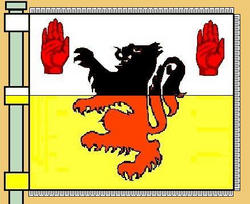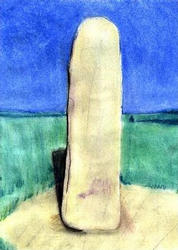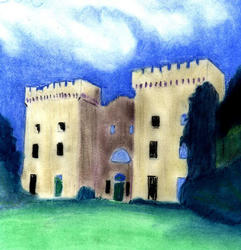Great Colman, son of Leinin, / melodious sage of smooth/ bright hand, the O’Dalys are bound to love thee, thou art/ our share of the Colmans.
Herein is the key of profit: remember the branch of/ kinship; suffer thou not,/ O friend, thy art, our craft,/ to spring away from thy stock.
Thou were the fosterer of the / poet from whom we come, thou/ patron whose name is Colman./ ‘Tis a tale that must be/ told (the tale of), Co1má n / whose fosterling was Dalach.
Dalach would not have studied/ the craft had not Colman been/ by his side: it was clear/ from his training that Colman / was guiding him at every step.
Whoever says that poetry/ merits nothing—how clerical— / poetry is no art opposed to/ God, it was He who helped / Colman
Colman, to whom all love was / due, was long devoted to/ poetry: it were not likely/ that he should have professed / it if God had not wished him/ to do so.
Upon Colman of lofty Cloyne / was put the first compact (?)/ therefore did he renounce/ poetry—better was the yoke / (of piety) for which it was/ changed.
Saintly Colman loved perfect / faith for what he got in/ heaven: he bequeathed the / art apart from which he/ obtained help.
We must set forth the ground / of our friendship for great/ Colman son of Leinin: the / bequest of his art by Colman / through the discontent of/ the white-footed red-lipped one.
Colman left the art of poetry/ to a beloved fosterling of/ his, the first man from whom/ we were surnamed, an ollav/ to whom reverence were due.
His fosterling was Dalach,/ to him he gave his blessing:/ to the true race of his old/ fosterling, ever since, the/ blessing of the righteous man has brought profit.
The chiefs of Dalach’s race—/ their strength is in legacies:/ upon the sods of the brown/ earth it was Colman who/ left them to us.
It were fitting for the/ race of Dalach, to whom he/ gave the profitable craft,/ to spread some verses of/ their art before Colman, patron of Cloyne.
As thou hast given us our art,/ O mighty Colman, find for us/ a city like the fort of God,/ when we have spent our first/ life.
Have regard to us, O fosterer/ of our ancestor, concerning/ that high and pleasant city:/ take me in charge above all/ others for my kinship to/ him whom thou hast chosen.
Refuse me not! I pray that/ thou wilt show to the seed/ of thy dear pupil, for love’s/ sake, the power of thy help,/ O Colman.
(From Studies—Dublin, Vol. VII—No. 25—March 1918. Reprinted from History of the O‘Dalys, by Edmund Emmet O‘Daly, 1937.)





